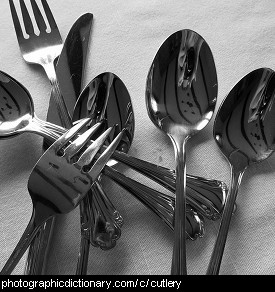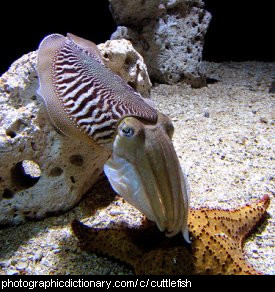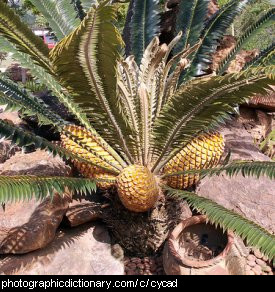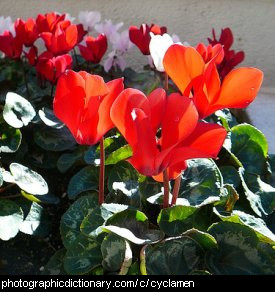Taking cuttings and striking them is a way of growing a new plant from a piece cut off from another plant.
The most successful way of taking cuttings varies widely depending on the type of plant. Some cuttings need to be of soft new growth, some hard, some taken in winter while the plant has no leaves, some in spring when it is vigorously growing, still other plants can be grown from only a piece of root or a leaf. Some need to be let dry a little first (hardened), some need special hormones, but as a general rule all cuttings need to be kept slightly moist so they do not die before they have their own root system.
The cuttings in the photo have been left to stand in water and have grown roots.
Cis forCuttlefish
Scientific name: order: sepiida
Cuttlefish are not fish, but are a type of mollusc related to squid and octopi. Cuttlefish have three hearts, blue-green blood and a single bone inside them. You often see cuttle bones being given to budgerigars. They can change colour to camouflage with the environment around them.
Cuttlefish are caught as food and prepared in a similar way to squid.
Scientific name: cycas revoluta
Video: view
A cycad is an ancient family of plants that look similar to a palm tree or a fern but is not actually related to either of them. Cycads grow seeds in large cones. They are extremely hardy plants, and many people keep them in pots in their houses. The cycad's cones are very easy to see in the picture.
Scientific name: cyclamen hederifolium
Cyclamen are small, pretty plants originally native to the area around Spain to Iran. They grow leaves from an underground tuber, and they die down over summer in hot areas. Cyclamen are frost tolerant. They have very attractive plants and are usually kept as decorative indoor plants. They are edible, and in some areas of the world are considered a delicacy.






















